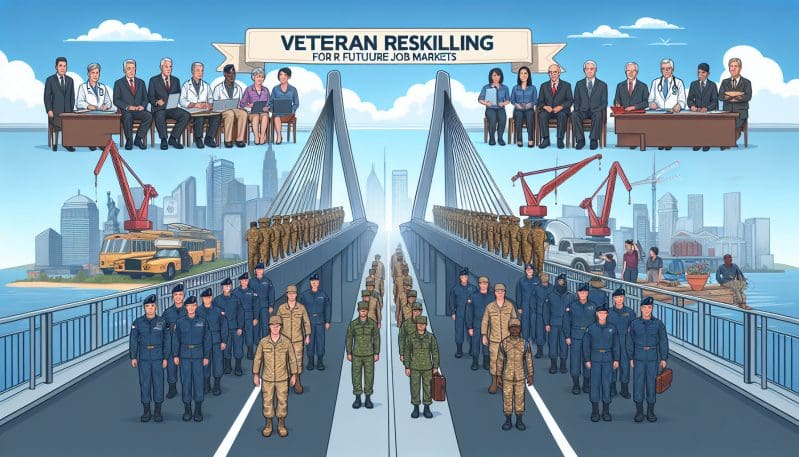Bridging the Skills Gap: How Veteran Reskilling Programs Can Future-Proof the Workforce
- Home
- Bridging the Skills Gap: How Veteran Reskilling Programs Can Future-Proof the Workforce

- Editors Desk
- January 11, 2024
- 0 Comments
In an age where technological advancements and market demands evolve at lightning pace, the global workforce faces a critical challenge: a widening skills gap. This issue, if left unaddressed, threatens to hamper productivity and economic growth. However, a solution is emerging from an unexpected quarter: military veterans. Reskilling and upskilling programs specifically tailored for these veterans offer a way forward, promising to bridge the gap while also providing former service members with meaningful career pathways after their military service concludes.
Veterans possess a wealth of transferable skills—leadership, teamwork, resilience, and adaptability—that are invaluable to today’s businesses. Despite this, transitioning from military to civilian employment can be daunting. It is here that veteran reskilling programs step in, serving both the individual and industry by aligning veterans’ unique skill sets with market needs.
A closer look reveals the multifaceted advantages of these initiatives. For veterans, such programs offer a chance to smoothly transition into the civilian workforce, armed with up-to-date knowledge and competencies directly relevant to current industry requirements. For industries, they tap into a reservoir of disciplined, mission-focused, and quick-learning candidates ready to fill skill shortages, thereby reducing hiring costs and improving workforce quality.
Moreover, the potential for public-private partnerships in this endeavor is immense. By combining government support with private sector expertise and resources, we can create comprehensive training platforms that not only teach hard skills but also offer guidance on how to navigate the unique aspects of civilian professional environments.
Mentorship is a critical component of these programs. Seasoned industry professionals can provide veterans with insights into industry trends, networking opportunities, and personalized advice that can significantly ease their transition. By investing in such mentorship opportunities, companies can cultivate a loyal and highly skilled workforce, while veterans can find a sense of community and support in their new roles.
Tailored educational programs are also crucial. By aligning curricula with future labor market demands, educational institutions can ensure veterans are not just prepared for the jobs of today but are also adaptable to the jobs of tomorrow. These programs can be designed to be flexible, acknowledging the diverse backgrounds and responsibilities veteran students may have.
The benefits are clear, yet realizing this vision requires concerted effort and investment. It mandates a collaborative strategy that brings together government agencies, educational institutions, industry leaders, and nonprofit organizations—all united in the mission of empowering veterans to play a pivotal role in shaping the future of work.
As we envision a labor market ready for tomorrow’s challenges, we cannot afford to leave behind the wealth of talent offered by veterans. By fostering a robust ecosystem of veteran reskilling and upskilling opportunities, we ensure that no worker is left behind, and our workforce remains competitive and dynamic. The stakes are high, but the rewards—for veterans, industry, and society—are much higher.

Leave A Comment